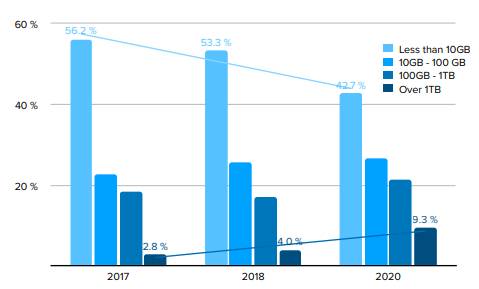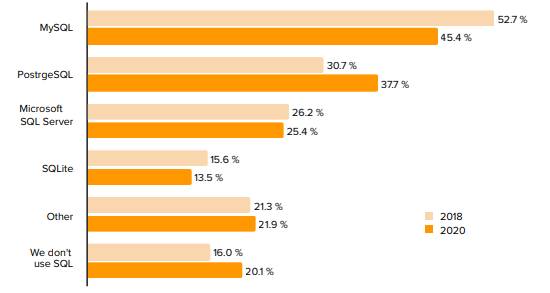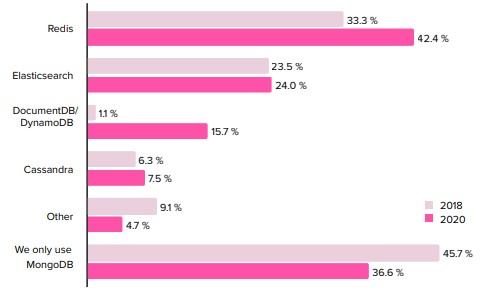| MongoDB Trends |
| Written by Janet Swift |
| Monday, 09 November 2020 |
|
A report that looks at trends in the usage of MongoDB alongside SQL and other NoSQL database technologies, reveals a decline in SQL-only technologies at the same time as the adoption of NoSQL technologies, to facilitate moving data to the cloud. The report, which comes from 3T Software Labs, the makers of the MongoDB client tool, Studio 3T, and is based on interviews and surveys conducted over four years with more than 18,000 data professionals. It highlights the shifting landscape of SQL, NoSQL, and multi-model database implementations among their users. According to 3T databases are getting bigger. The report notes: With the growth of analytics and the rise of big data, it is unsurprising that database sizes are growing faster than ever. In just two years we’ve seen fewer and fewer MongoDB users with small databases of less than 10 gigabytes, and more and more users with large databases. In 2017, less than 3% of MongoDB users reported their largest database was over 1 terabyte. In 2020, that number has tripled to over 9%. Another finding is that, over time, developers are also using more database technologies. In 2017 a MongoDB user used on average 2 different technologies, either relational or non-relational whereas in 2020, the average is over 3 per user. In 2018, only 16% of the developers participating in the survey didn't use any SQL technology alongside MongoDB, but by 2020 this percentage had dropped to 16%. While MySQL continued to be the most used database, its use had declined from 53% to 45%, on the other hand the use of Postgre SQL had increased from 31% to 38%. The use of Microsoft SQL Server hardly changed but only around a quarter of respondents use it: Looking at NoSQL technologies, there has been an increase in use of Redis, from 33% in 2018 to 42% in 2020 and of Document DB/Dynamo DB from 1% to 16%. Use of just MogoDB, without any other NoSQL technology had decreased from 46% to 37%: The report also looks at cloud adoption with this finding: More users report hosting all of their non-relational data in the cloud than relational data, suggesting that non-relational technologies like MongoDB might be moving to the cloud faster than their relational peers, or that query performance in the cloud might be easier to achieve with NoSQL data structures than with traditional tabular data structures used in SQL databases.
More InformationRelated ArticlesStudio3T MongoDB GUI Adds Migration MongoDB Atlas Adds MultiCloud Cluster Support MongoDB Improves Query Language MongoDB 4.0 Gets Multi-Doc ACID Support To be informed about new articles on I Programmer, sign up for our weekly newsletter, subscribe to the RSS feed and follow us on Twitter, Facebook or Linkedin.
Comments
or email your comment to: comments@i-programmer.info
|
| Last Updated ( Monday, 09 November 2020 ) |






